

Metal detecting holidays in England with the World's most successful metal detecting club.20 years plus.
Twinned with Midwest Historical Research Society USA.
-
Roman military equipment
Ref Books
Roman buckles and mIlitary fittings - Stuart Laycock
Roman miltary equipment - Bishop & Coulston
Finds from Roman Aldborough - Bishop
Roman studies - The British Museum
Iron Age Britain - Cunliffe
Artefacts - Bennetts
New Roman/British silver coin page click here
New seperate Roman gold page click here
New seperate Roman military artefact page click here
Roman terret rings on separate page
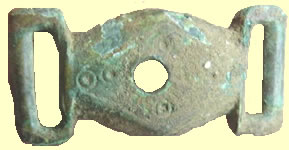
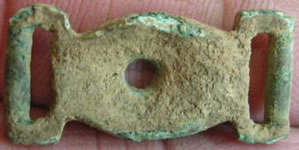
Roman strap fitting (with ring-and-dot decoration)
4.73g, 26.71mm L x 12.57mm W



Roman military suspension loop with 2 rivet fixing



Roman shield
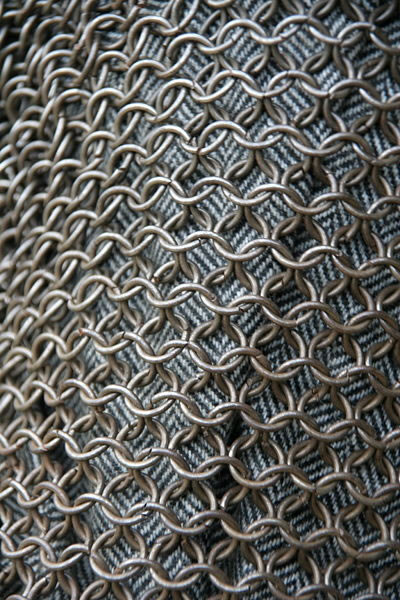
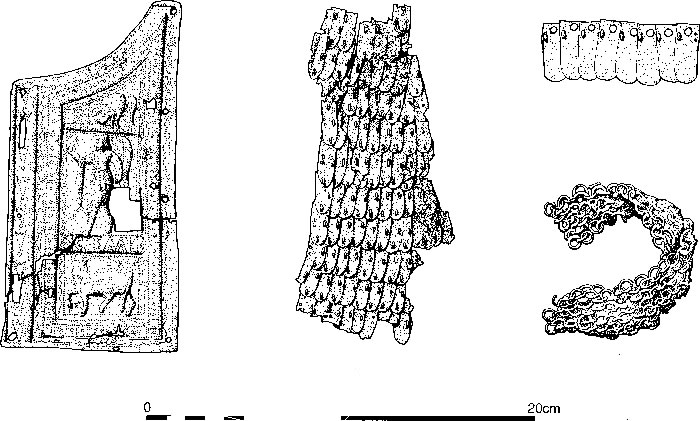
Roman chain mail 
Roman armour

A length of roman armour made from copper-alloy scales 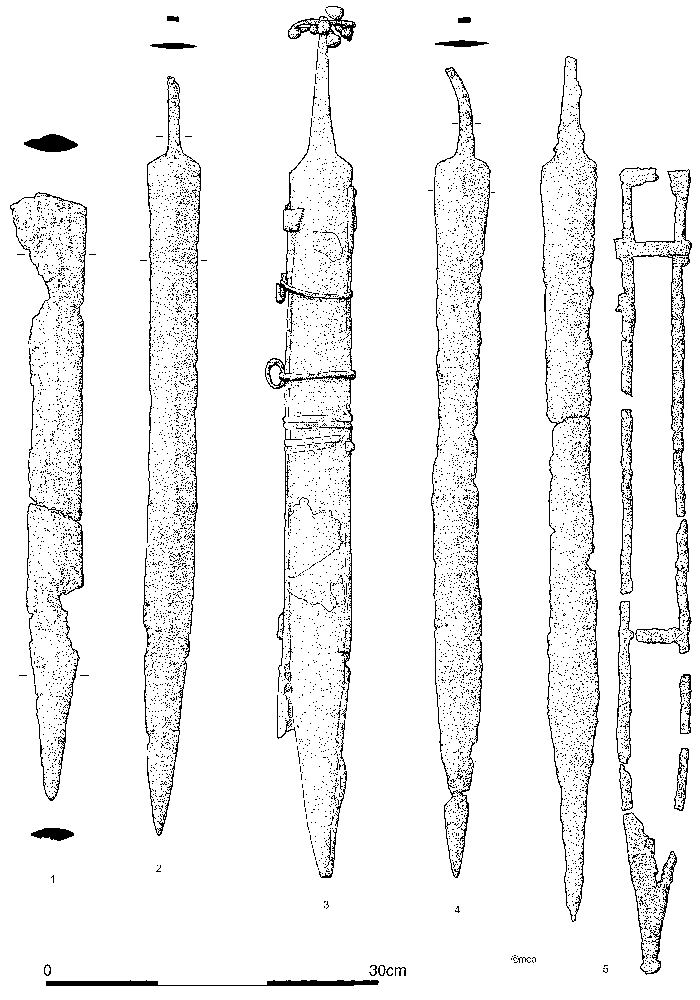
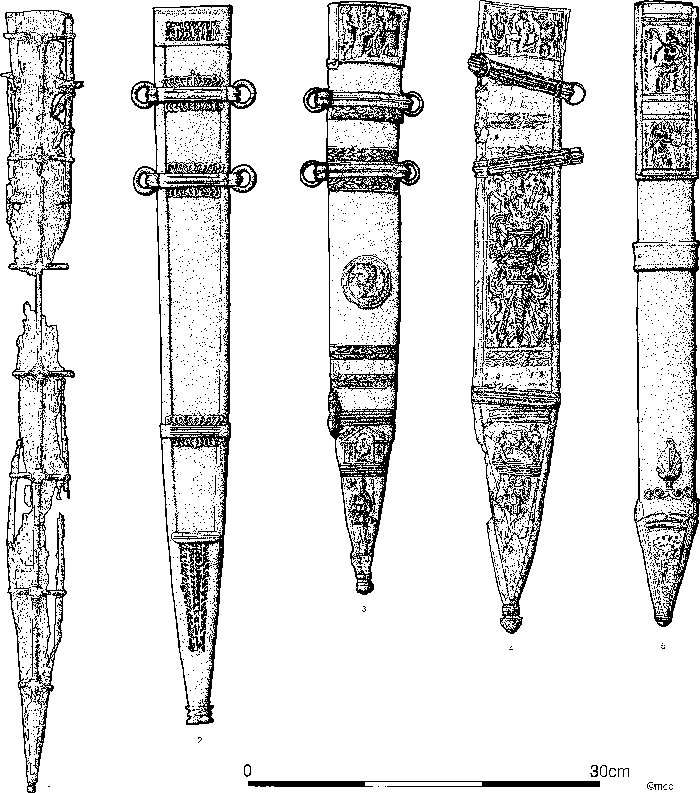
Roman swords and Sheaths

All sword, daggers and knife quillions and pommel on seperate page
Roman knife and sword parts on seperate page
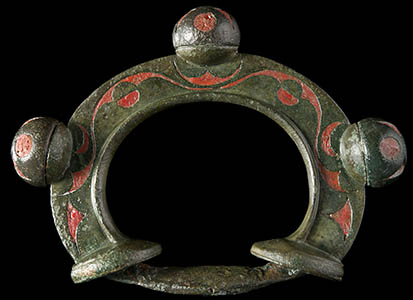
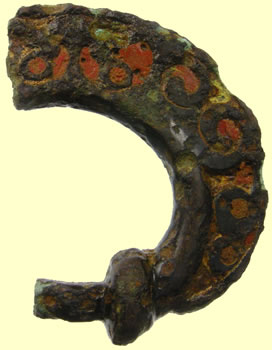
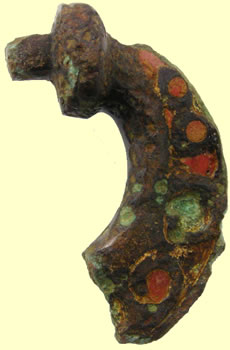


Monster find Romano/British Chariot top Terret ring - this is enormous with gold, red enamelled
65mm high
All terret rings now on separate page - click here
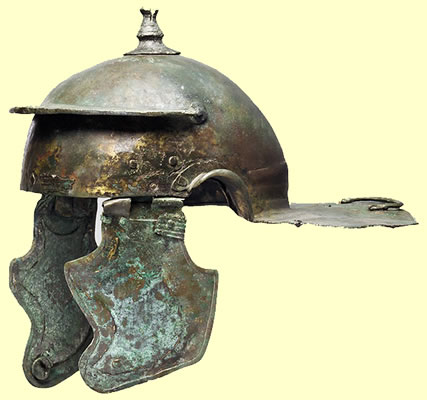
1stC AD Weisenau type helmet - they have the distinctive carrying handle on the neck guard
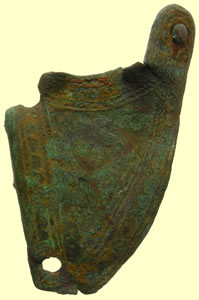
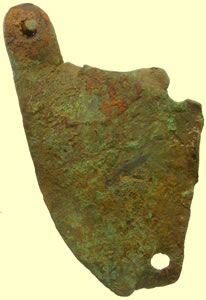
C4th to 8thC Decorated and gilded helmet cheek piece - could be Roman or Saxon - checking ref books
75.02mm L

Roman helmet handle 14.08g, 87.42mm L


Roman bronze helmet trim
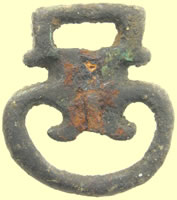
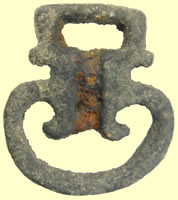

ESS-F7E490 Roman military buckle
An early Roman cast copper alloy buckle. A 'pelta' style buckle associated with the military equipment of the 1st and 2nd century AD, typically used on sword belts. The buckle frame is oval (30.43mm wide), with the terminals curving back in on themselves forming a decorative swirl. The bar is obscured by the pin which is iron and has rusted onto the bar. The remainder of pin has broken off. Attached to the oval frame is a smaller (20.17mm wide) rectangular frame with a grooved pin rest. The colour of the buckle is dark green with rusting around the pin. Cuddeford pages 8 and 9 has parallels, the closest of which is no. 4 on page 9.
All Roman buckles on separate page Roman artifact page
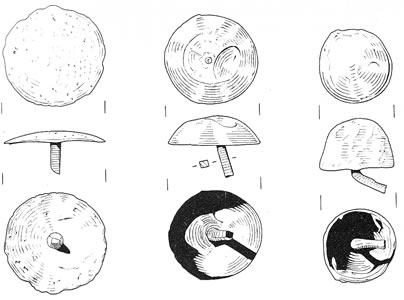


Roman Military piece - Lugged baldric mount
All Roman mounts on separate page



A near identical mount is in Benet’s Artefacts second volume, page171 number R09-0403.
Described as Mount (Eagle) 50mm. Spread wings with feathers detailed. Mounted on a stem. Perhaps from a military standard.
All Roman eagle mounts on a separate page
A complete Romano-Britsh protected loop terret. The loop through which the reins would have passed remains. This consists of a sub-circular sectioned D-shaped attachment loop that is situated beneath a triangular ‘skirt’ that comes down over the loop to the front and back. At each side the skirt ‘flicks-up’ rather like a jesters hat. There are a number of these types of terrets known from Norfolk including the examples from Beighton and Tatterset (31569 and HER 33975). 44.61g, 45.75mm L x 32.50mm H x 28.28mm H
Protected loop terrets are usually considered to be Roman and dating to the late first and second centuries A
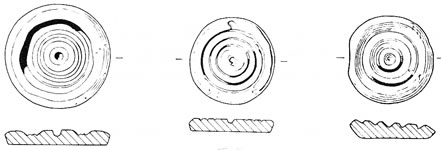


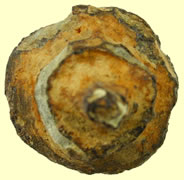
All Roman mounts on separate page
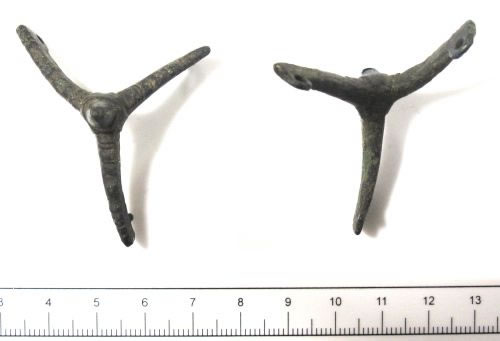
A copper alloy Roman prick spur probably dating to the fourth century AD.
The spur is made up of three projecting arms with approximately 90 degrees between each arm. On two of the arms are small loops and a break suggesting one on the third arm. There is a hexagonal area in the centre of the three arms and this is where the spur is attached. The spur is cone shaped. On each of the arms there is incised linear decoration.
Spurs such as this example are thought to be of a British type and have been found in fourth and fifth century contexts. Although spurs are primarily military in character it is not unusual to find spurs of this type in rural locations. Similar examples have been recorded on the PAS database: DENO-8FB8E3 and LIN-D3B115.
All prick spurs on Romano British artifact page
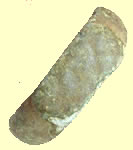
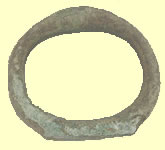
Legio XIX was a Roman legion levied (drafted into military service) in 41 or 40 BC by Augustus. They were destroyed in AD 9 in the Battle of the Teutoburg Forest. The emblem of the XIX th legion is unknown, but probably was the Capricorn as other legions levied by Augustus.
The first assignment was in Sicily where Sextus Pompeius, son of Pompey, was still rebelling. This revolt put Rome's grain supply in peril and it needed a harsh response.
In 30 BC, veterans of the XIX legion were settled near Pisa, and after that, the rest of the legion was allocated in the Rhine frontier with base camp at Cologne. The XIX legion participated in the German Campaigns of Drusus (13 to 9 BC) and Tiberius (8 to 5 BC). By the year 5 BC Germania was a Roman province and Publius Quintilius Varus was assigned as governor.
In September AD 9, Arminius, leader of the Cherusci and a Roman ally, set a trap. He reported a major revolt of one of the western tribes and suggested the return of both governor and his legions to the Rhine. Varus accepted the suggestion and went with the XVII, XVIII and XIX legions. The army was trapped near Osnabrück and was completely destroyed in the Battle of the Teutoburg Forest. Between 16 and 18, Germanicus, the leader of the Rhine armies, looked for the remains of the legions. His army buried the bodies and recovered the legions' eagles for Rome.
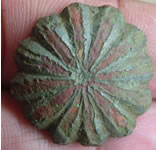
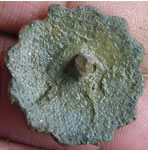
 Roman mililtary baldric rosette mount with red enamelling remaining single integral fixing ref LaycockRoman miiltary baldric rosette mount with single integral fixing - ref Laycock
Roman mililtary baldric rosette mount with red enamelling remaining single integral fixing ref LaycockRoman miiltary baldric rosette mount with single integral fixing - ref Laycock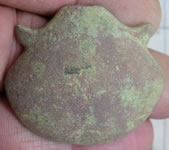
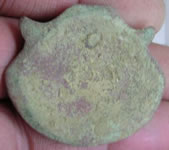
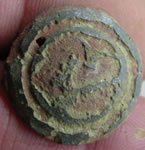
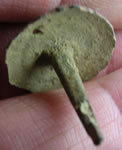 Roman military Pelta mountRoman Baldric phalerae
Roman military Pelta mountRoman Baldric phaleraeRoman domed studds
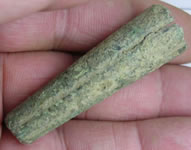
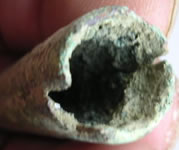
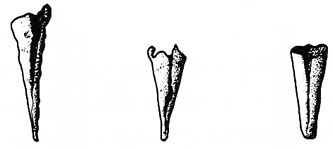
|
3rd C Roman spear butt – Osterburken type Ref Coulston - Drawing Roman 3rdC spear butts
|
|
 |
 |
Roman bronze helmet trim |
Roman bronze helmet trim |
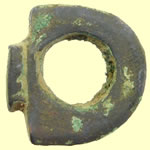 
|
|
|
|

|
|